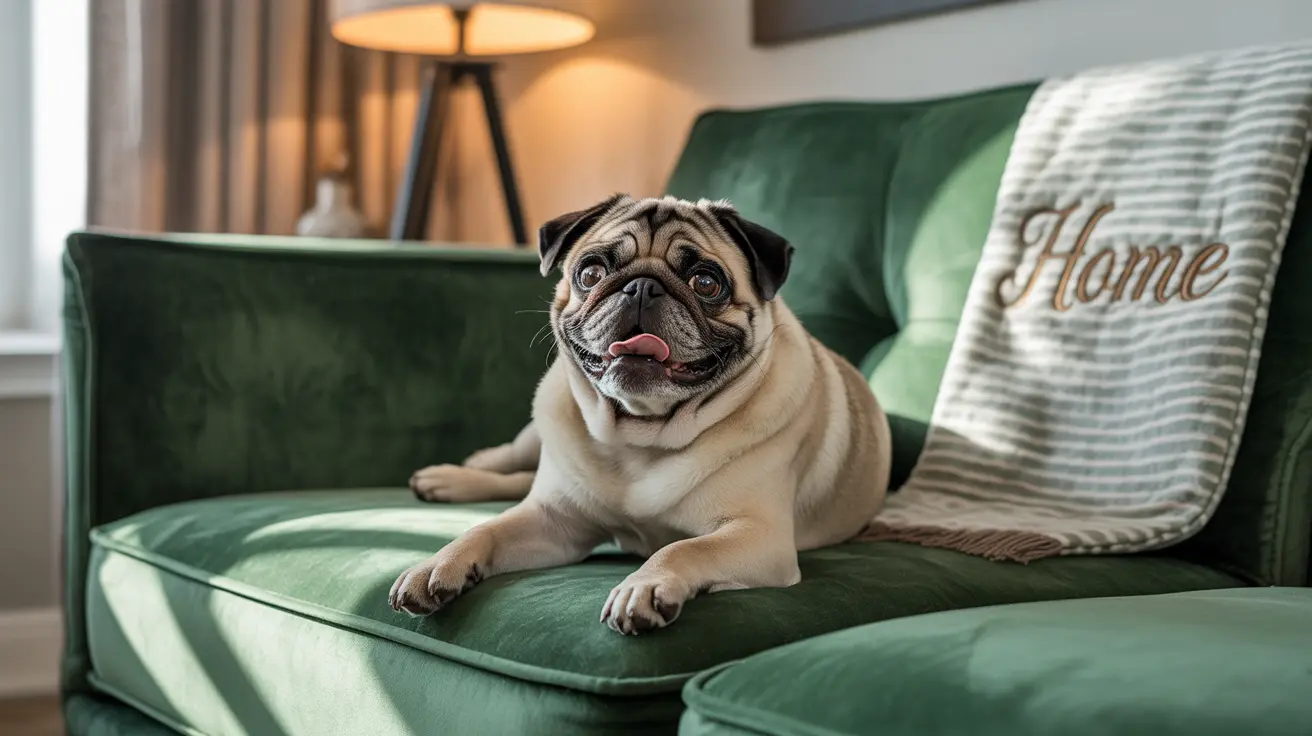If you're a pug parent, you might have experienced the startling moment when your adorable companion lets out what can only be described as a human-like scream. This distinctive vocalization, quite different from a typical dog bark, often catches new pug owners off guard and can be concerning if you don't understand its causes.
In this comprehensive guide, we'll explore the various reasons behind pug screaming, help you differentiate between normal and concerning vocalizations, and provide practical solutions for managing this unique behavior.
Common Reasons for Pug Screaming
Pain or Medical Issues
One of the most important reasons to pay attention to your pug's screaming is that it could indicate pain or discomfort. Pugs are prone to several health conditions that might trigger vocal reactions:
- Joint problems and arthritis
- Spinal issues
- Eye conditions
- Breathing difficulties due to their brachycephalic nature
If your pug suddenly starts screaming without an obvious external trigger, it's crucial to have them examined by a veterinarian to rule out any medical concerns.
Emotional Expression
Pugs are emotionally expressive dogs, and screaming can be their way of communicating various feelings:
- Excitement during playtime or when greeting family members
- Anxiety in new situations or during loud events
- Fear response to sudden noises or movements
- Attention-seeking behavior
Understanding Your Pug's Screams
Excitement vs. Distress
Learning to distinguish between happy and distressed screams is essential for proper response:
- Excitement screams often accompany wagging tails and playful behavior
- Distress screams may be accompanied by cowering, shaking, or attempts to hide
- Pain-related screams typically occur with specific movements or touch
Attention-Seeking Behavior
Pugs are social creatures who quickly learn which behaviors get their owners' attention. Some may develop a habit of screaming to:
- Request food or treats
- Initiate playtime
- Gain attention when feeling ignored
- Express displeasure when left alone
Managing Pug Screaming
Training and Prevention
While some vocalization is normal for pugs, excessive screaming can be managed through:
- Positive reinforcement training
- Regular exercise and mental stimulation
- Consistent daily routines
- Early socialization to prevent anxiety-based screaming
Creating a Calm Environment
Help reduce stress-related screaming by:
- Providing a quiet, safe space for your pug
- Using calming aids during stressful events
- Maintaining predictable schedules
- Ensuring adequate physical and mental exercise
Frequently Asked Questions
Why do pugs sometimes scream loudly instead of barking?
Pugs scream as a unique form of communication that's different from barking. This behavior is partly due to their anatomy and partly due to their expressive nature. Their brachycephalic (flat-faced) structure affects their vocal capabilities, sometimes resulting in more dramatic vocalizations.
Could my pug's screams be a sign of pain or a health problem?
Yes, sudden or unexplained screaming could indicate pain or health issues. If your pug's screaming is accompanied by other symptoms or seems unusual, consult a veterinarian immediately to rule out medical conditions.
How can I tell if my pug is screaming from excitement or anxiety?
Look at your pug's body language: excited screams usually come with loose, happy body language and wagging tails, while anxiety-related screams are often accompanied by tense posture, tucked tails, or trembling.
What should I do if my pug screams when left alone or during separation?
Address separation anxiety through gradual desensitization training, providing engaging toys, and considering options like doggy daycare or pet sitters. Consult with a professional trainer if the behavior persists.
How can I manage or reduce my pug's attention-seeking or startled screams?
Avoid reinforcing attention-seeking screams by not responding immediately. Instead, reward quiet behavior and provide plenty of positive attention during calm moments. For startled screams, work on desensitization to common triggers and maintain a predictable environment.
Conclusion
While pug screaming can be startling or concerning, understanding its causes helps you better respond to your pet's needs. Remember that some vocalization is normal for the breed, but sudden changes in screaming patterns should always be evaluated by a veterinarian. With patience, training, and proper care, you can help manage your pug's vocal expressions while maintaining their happy, expressive personality.






